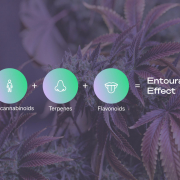Elevate Your Beverage Experience with The Happy Can
Are you ready to take your beverage game to the next level? Look no further than The Happy Can, where a tantalizing trio of flavors awaits to delight your taste buds and elevate your refreshment experience. Let’s dive into what makes The Happy Can the perfect choice for those seeking a burst of flavor and pure refreshment.
Root Brew: A Nostalgic Indulgence
Embark on a journey down memory lane with The Happy Can’s Root Brew. This beverage masterpiece captures all the essence of classic root beer, delivering a symphony of flavors that dance gracefully on your palate. From the exquisite spices to the elusive undertones, every sip of Root Brew promises an unforgettable taste adventure that will leave you craving more.
Purp Slurp: Grape Soda Bliss
Indulge your senses with the playful dance of grape soda in The Happy Can’s Purp Slurp. Dive into the enchanting world of sweet, succulent grapes amidst a delightful fizz that tantalizes your taste buds with every sip. Whether you’re a grape aficionado or simply craving a burst of fruity flavor, Purp Slurp delivers an experience that’s as refreshing as it is satisfying.
Citrus Haze: A Zesty Sensation
Get ready to be electrified by the vibrant fusion of oranges, lemons, and limes in The Happy Can’s Citrus Haze. This exhilarating blend packs a punch with its refreshing flavor that invigorates your senses and leaves you feeling happy. With each sip, indulge in the zesty goodness of Citrus Haze and let its vibrant flavors transport you to a state of pure refreshment.
Elevate Your Beverage Game with The Happy Can
With The Happy Can, the essence of pure refreshment is just a sip away. Whether you’re craving the nostalgic taste of root beer, the fruity bliss of grape soda, or the zesty sensation of citrus, The Happy Can has a flavor for every palate. So why settle for ordinary when you can embark on a flavor-filled journey unlike any other?
Experience the irresistible flavors of Root Brew, Purp Slurp, and Citrus Haze and discover why The Happy Can is the ultimate choice for those who seek pure refreshment with a burst of flavor. Cheers to happiness in every can!











